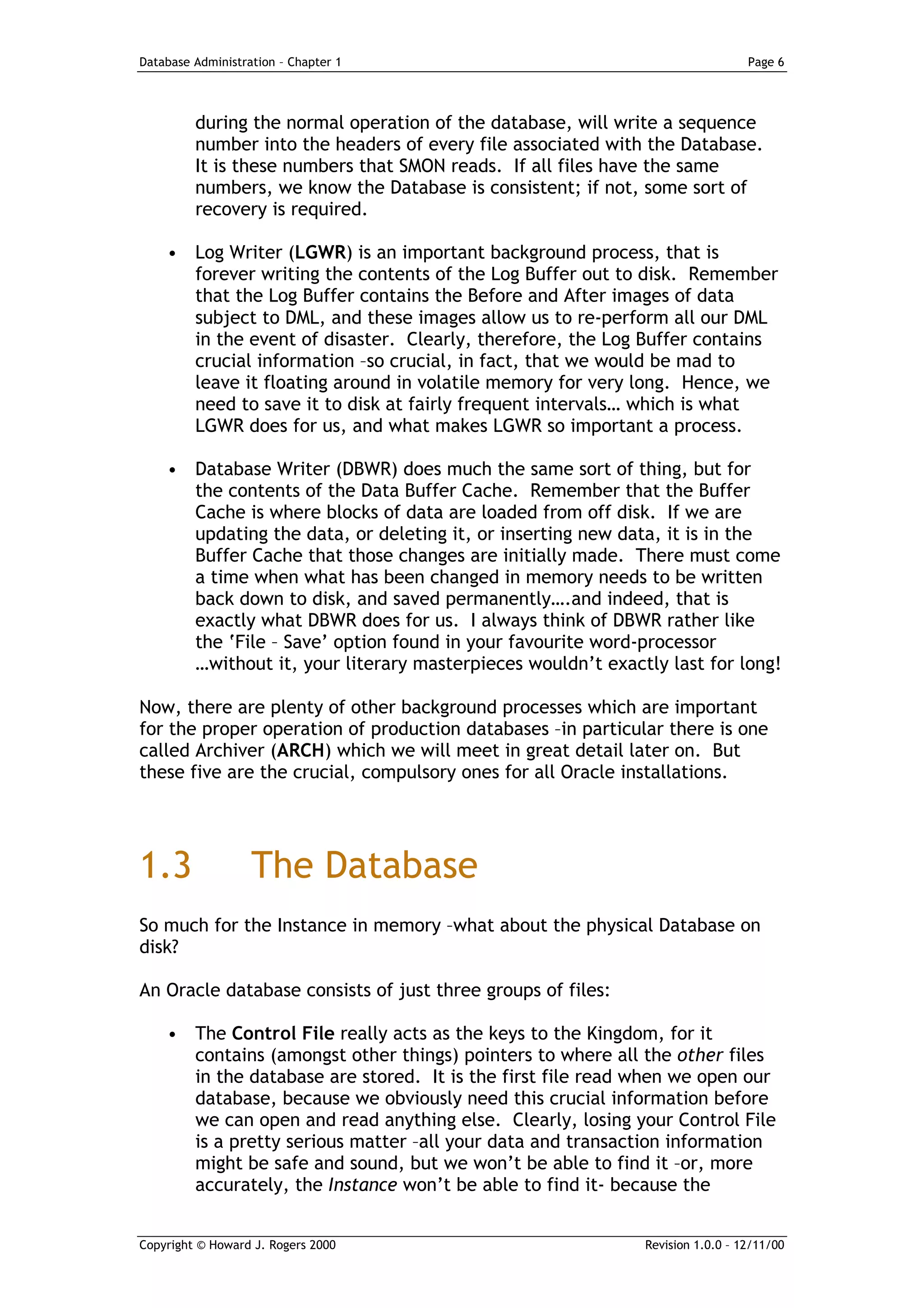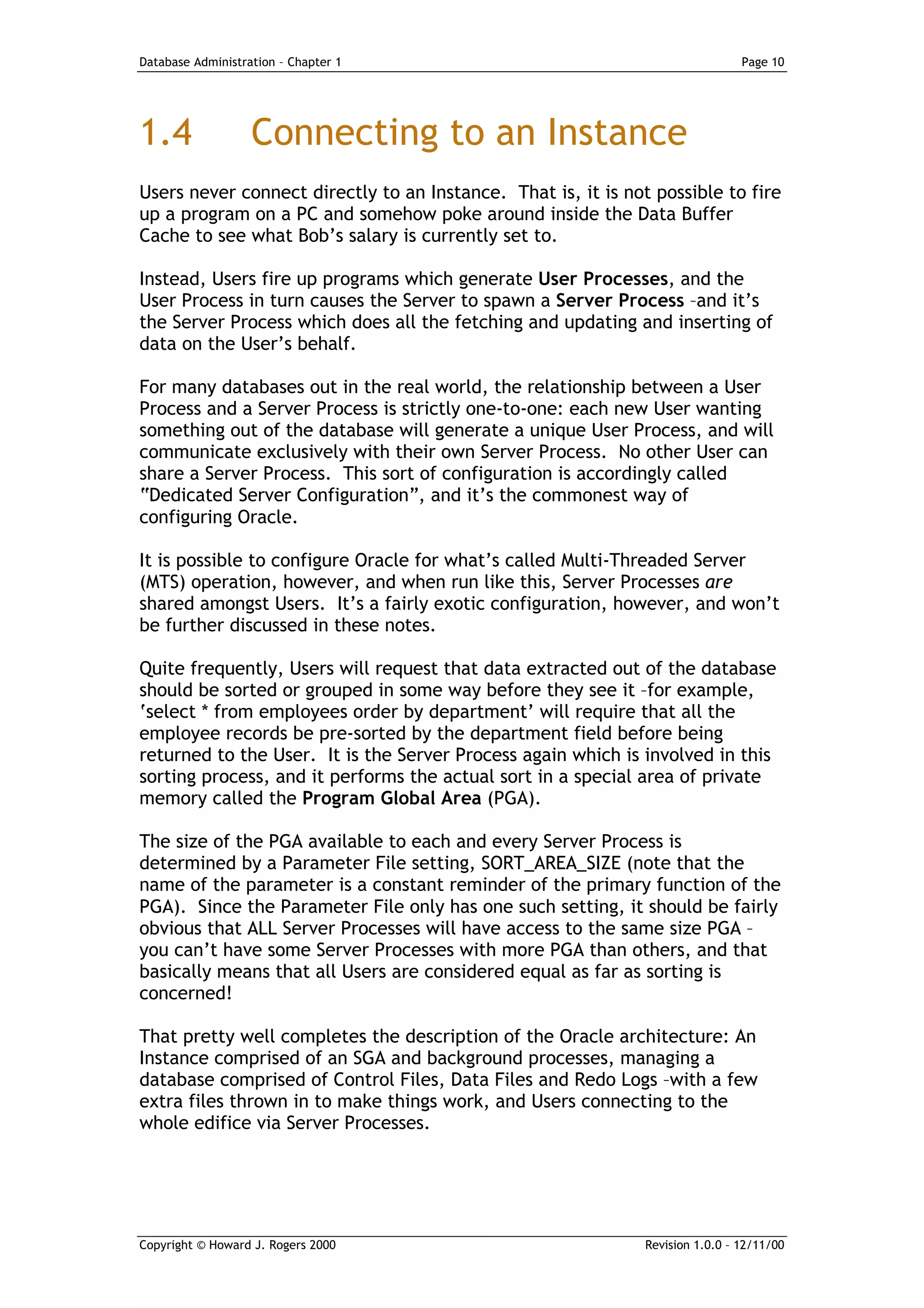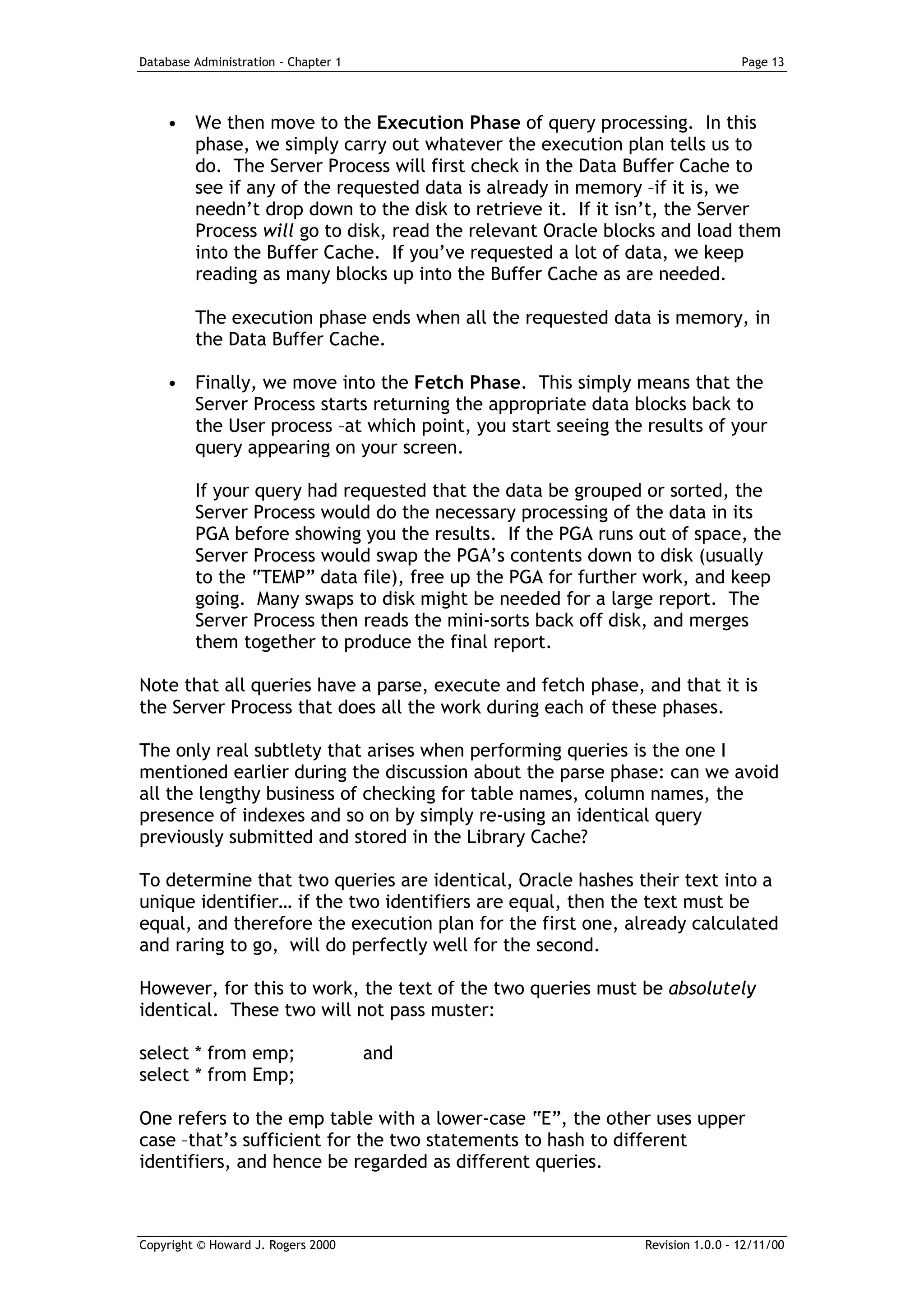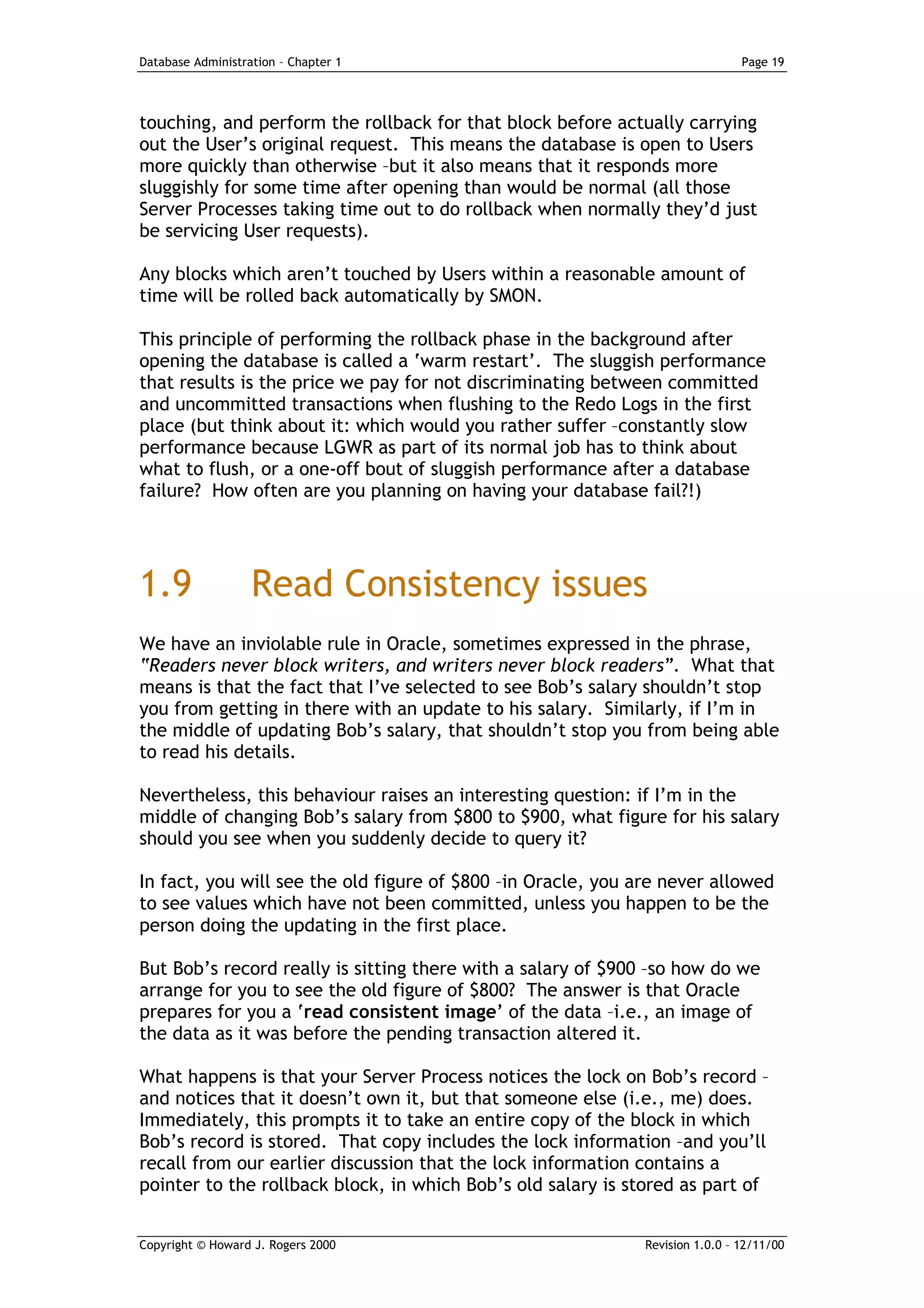This document provides an overview of the first chapter of an Oracle 8i DBA training course, emphasizing key concepts in database administration such as the distinction between a database and an instance, the structure and functions of the System Global Area (SGA), and the essential processes managing instance operations. It details the significance of physical files, including control files, data files, and redo logs, and introduces the background processes needed for a functioning Oracle database instance. Additionally, the document underscores the importance of database backup and recovery mechanisms, particularly through archiving redo logs.



















